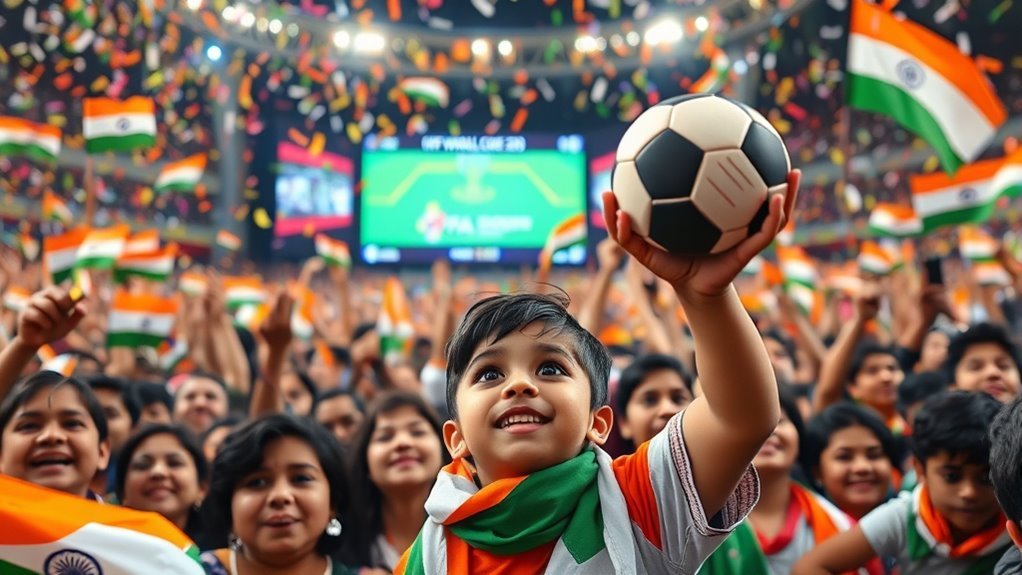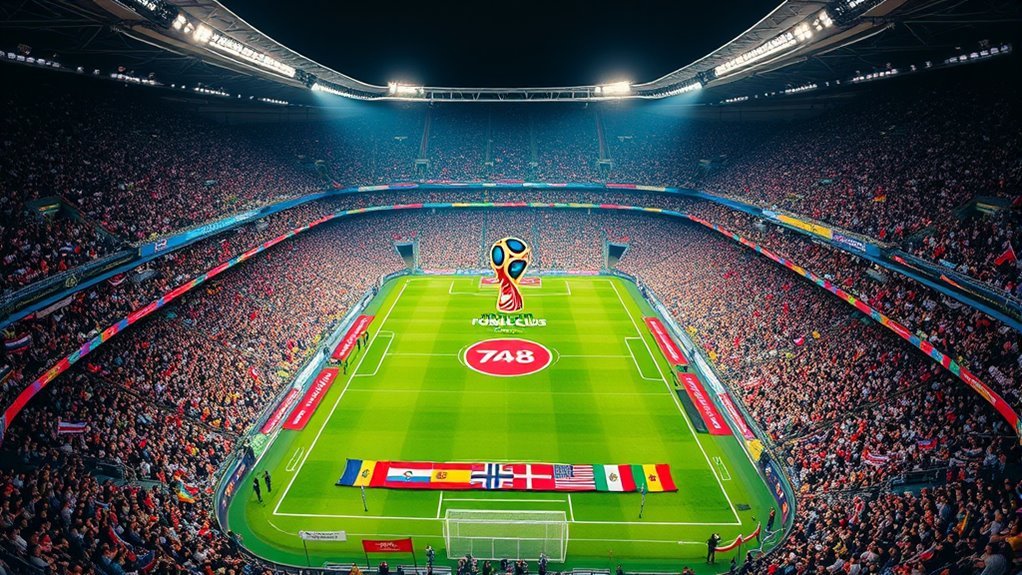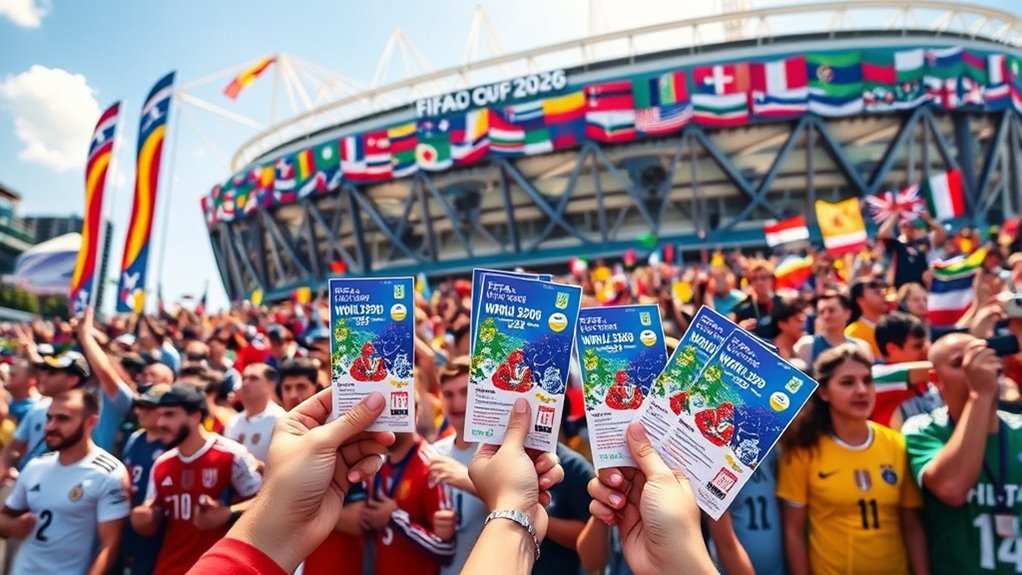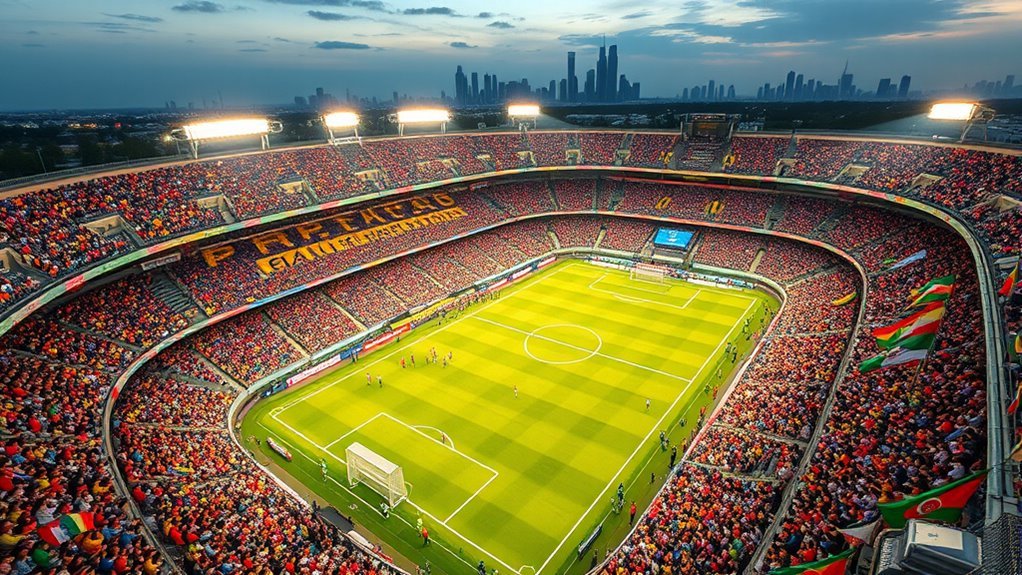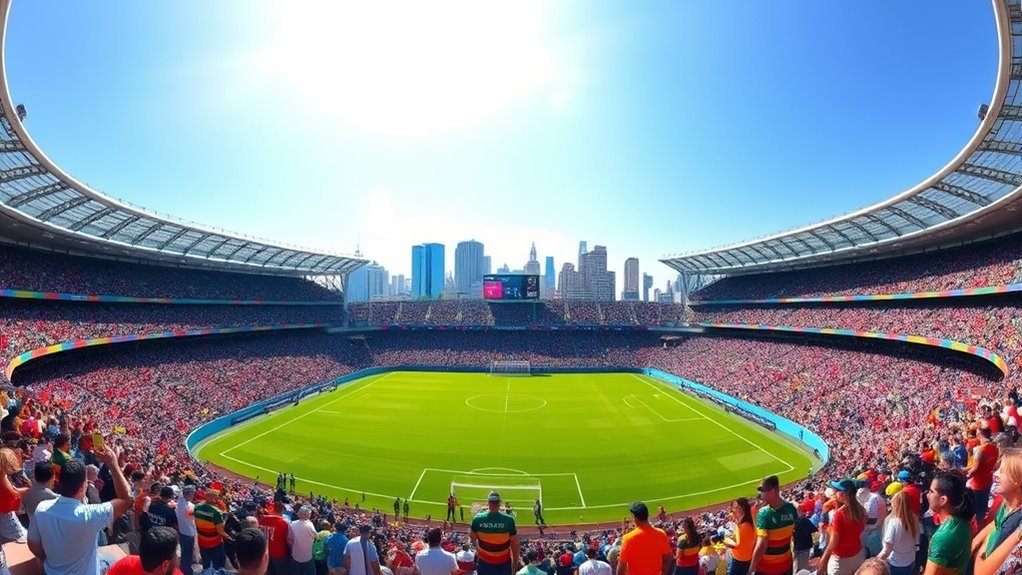As of now, India hasn’t qualified for the FIFA World Cup 2026, but there’s growing optimism surrounding the team’s recent performance. They’ve shown potential in various matches, sparking hope among fans. The team’s journey has included both thrilling victories and tough setbacks, highlighting their resilience. With ongoing player development initiatives, the future looks promising. If you’re curious about India’s past qualifiers and the challenges they face, there’s much more to explore.
Overview of FIFA World Cup 2026 Qualification Process
As the excitement builds for the FIFA World Cup 2026, it’s essential to understand the qualification process, which varies for each confederation. Each region has its own qualification criteria, creating a unique path to the tournament. For instance, teams from UEFA will face intense competition in their group stages, while CONCACAF teams may have a more streamlined process.
You’ll see that the qualification rounds often include matches that test each country’s skill and strategy, pushing them to earn their spot on the world stage. The stakes are high; every match counts when it comes to advancing through these group stages.
As you follow the journey of your favorite teams, remember that the thrill lies not just in the final tournament but in every step of the qualification process. Embrace the journey; it’s all part of the beautiful game’s freedom and spirit.
India’s Performance in Previous World Cup Qualifiers
Though India has faced significant challenges in previous World Cup qualifiers, the spirit and determination of its football team have remained unwavering. You can’t ignore India’s struggles on the international stage, where they’ve often found themselves up against formidable opponents. Historically, the team’s performances have been a mixed bag, with just a handful of memorable moments sprinkled across decades of competition.
In the early years, India’s football was more about passion than success, and that passion still resonates today. Despite not qualifying for the World Cup, the players have shown resilience, learning from each campaign. The team has made strides in recent years, showcasing their growth and potential. Fans have rallied behind them, dreaming of a brighter future. It’s this blend of hope and hard work that fuels the ongoing journey toward their ultimate goal: qualifying for the FIFA World Cup and making their mark on the global stage.
Key Matches and Turning Points in the Qualifying Campaign
While traversing the challenging landscape of World Cup qualifiers, India has experienced several key matches that served as pivotal turning points in their campaign. You can’t overlook those key victories that sparked hope among fans and players alike. The thrilling win against a stronger opponent showcased India’s grit and potential, igniting a sense of belief that they could compete on the global stage.
However, it hasn’t all been smooth sailing. There were significant setbacks, like unexpected losses that left fans disheartened and questioned the team’s strategies. Each match, whether a victory or setback, has been a lesson, shaping the team’s approach and mentality.
As the qualifiers progressed, these moments became defining factors, pushing India to adapt and evolve. You’ll find that every match, every goal, and every defeat plays a role in this journey, driving the dream of World Cup qualification further into the domain of possibility.
Challenges Faced by the Indian National Team
After experiencing the highs and lows of the qualifying matches, the Indian national team now faces a multitude of challenges that test their resolve and resilience. One major hurdle is the need for effective coaching strategies that adapt to the team’s evolving dynamics. With players coming from diverse backgrounds, fostering unity becomes essential.
You might notice that inconsistencies in performance can stem from a lack of cohesion. It’s important for the coaching staff to cultivate strong relationships and communication among players, promoting a sense of freedom and trust. Furthermore, the pressure of representing a nation can weigh heavily, impacting mental fortitude.
Balancing individual talent with collective goals is another challenge. As you follow the team, remember that overcoming these obstacles is critical for their growth and success. Only by addressing these issues can the Indian national team hope to thrive on the world stage. Additionally, implementing mental preparation techniques can help players manage stress and enhance their performance under pressure.
Player Development and Future Prospects
As India sets its sights on the FIFA World Cup 2026, player development is essential for future success. You’ll notice that youth academy initiatives are gaining momentum, providing young talent with the skills and training they need. Plus, international exposure opportunities are becoming more accessible, allowing players to compete at higher levels and gain valuable experience.
Youth Academy Initiatives
With the growing popularity of football in India, youth academy initiatives are becoming essential for player development and future prospects. These programs focus on youth development, nurturing young talent to create a robust pipeline for professional teams. By forging strong academy partnerships, clubs can access better resources, coaching expertise, and competitive environments that elevate skill levels.
You’ll see more talented players emerging from these academies, equipped with the techniques and discipline necessary to excel. The emphasis on holistic training also helps in shaping not just skilled athletes but well-rounded individuals. As you witness this transformation, it’s clear that investing in youth academies is vital for India’s aspirations in the global football arena, especially with the FIFA World Cup 2026 on the horizon.
International Exposure Opportunities
Building on the foundation created by youth academies, international exposure opportunities are pivotal for Indian players aiming to make their mark on the world stage. By participating in international tournaments, you not only hone your skills but also gain invaluable global exposure. Competing against players from different cultures and backgrounds enriches your experience, pushing you to elevate your game. These opportunities can open doors to professional clubs abroad, allowing you to showcase your talent on a larger platform. Additionally, the insights gained from playing at this level can enhance your tactical understanding and mental resilience. Embracing these experiences will not only benefit your personal development but also contribute to the growth of Indian football as a whole. Don’t miss out on these chances!
Fan Support and Its Impact on Team Morale
When fans rally behind their team, it creates an electrifying atmosphere that can greatly boost player morale. Think about it: that roar from the stands, the chants echoing through the stadium, it all fuels the players’ hunger to win. Your energy can ignite team spirit, making players feel connected to something bigger.
Fan engagement isn’t just about showing up; it’s about the collective heartbeat of the crowd. When you’re waving flags and singing songs, you’re lifting your team, reminding them that they’re not alone on this journey. Every cheer, every shout, becomes a part of the game’s fabric, intertwining with the players’ determination.
In moments of struggle, that unwavering support can be the difference between defeat and victory. So, as you stand united with fellow fans, remember: your passion doesn’t just fill the stadium, it fills the hearts of the players, driving them to aim for greatness.
Frequently Asked Questions
What Is the Format of the 2026 World Cup?
Imagine a time when only 16 teams played. The 2026 World Cup format expands to 48 teams in 16 groups, leading to knockout rounds. This tournament structure promises thrilling matches and more chances for every team.
How Many Teams Qualify for the 2026 World Cup?
For the 2026 World Cup, 48 teams will qualify, expanding the tournament’s scope. You’ll see a diverse range of participating nations, with new qualification criteria aiming to enhance global representation and excitement in football.
When Will the 2026 World Cup Be Held?
The 2026 World Cup’s like a grand symphony, set to unfold from June 8 to July 8, 2026. Mark your calendar for the tournament schedule; it promises a month of unforgettable moments and freedom on the field.
Which Countries Are Co-Hosting the 2026 World Cup?
The co-hosting nations for the 2026 World Cup are the United States, Canada, and Mexico. Each country’s got hosting responsibilities, ensuring a vibrant atmosphere and diverse experiences for fans throughout the tournament. Enjoy the freedom of choice!
How Does the Qualification Process Differ From Previous World Cups?
“Every cloud has a silver lining.” The qualification changes for 2026 expand teams, enhancing global impact. You’ll see more nations competing, reflecting a broader representation in football, giving everyone a fair shot at glory.
